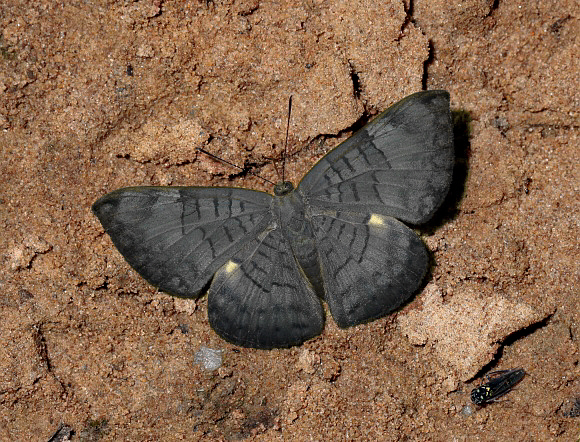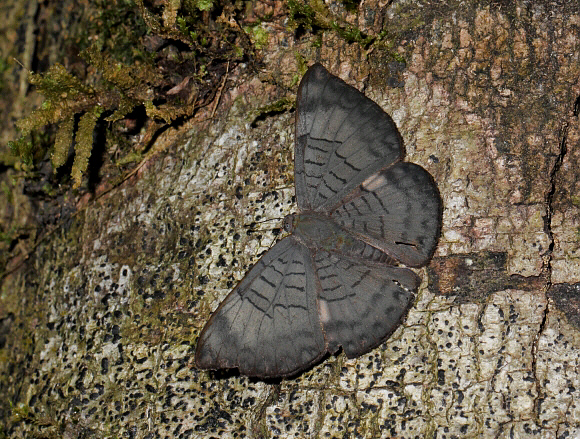 Emesis fastidiosa, male, Satipo, Peru � Adrian Hoskins
Emesis fastidiosa, male, Satipo, Peru � Adrian Hoskins
Introduction
The distinctive wing pattern and shape of Emesis make them instantly recognisable as a genus, but some of the 41 species can be difficult to tell apart, requiring close examination of the markings.
This species, along with eurydice, castigata, liodes, aurimna, glaucescens and spreta was formerly considered to be a “form” or subspecies of Emesis lucinda, but all of these taxa have since been elevated to the status of full species.
The male of Emesis fastidiosa can be distinguished from lucinda by the presence of a pale whitish mark near the leading edge of the hindwing.
The butterfly is found in the eastern Andes of Peru and is widespread in southern Brazil. It probably also occurs in eastern Ecuador, and in Bolivia.
Habitats
This species occurs in primary rainforest at altitudes between about 200-900m.
Lifecycle
I have no information specific to fastidiosa. The eggs of Emesis species are typically white and highly sculptured. They are laid singly or in clusters of up to 30, according to species. The known larval foodplants encompass the families Ranunculaceae, Euphorbiaceae, Rhizophoraceae, Sterculiaceae, Anacardiaceae and Nyctaginaceae.
Adult behaviour
Males can sometimes be seen imbibing moisture from river beaches and road surfaces, but are more commonly encountered within the forest, where they can be found on damp and shady paths, or basking on foliage or logs.

Emesis fastidiosa, male, Satipo, Peru – Adrian Hoskins
